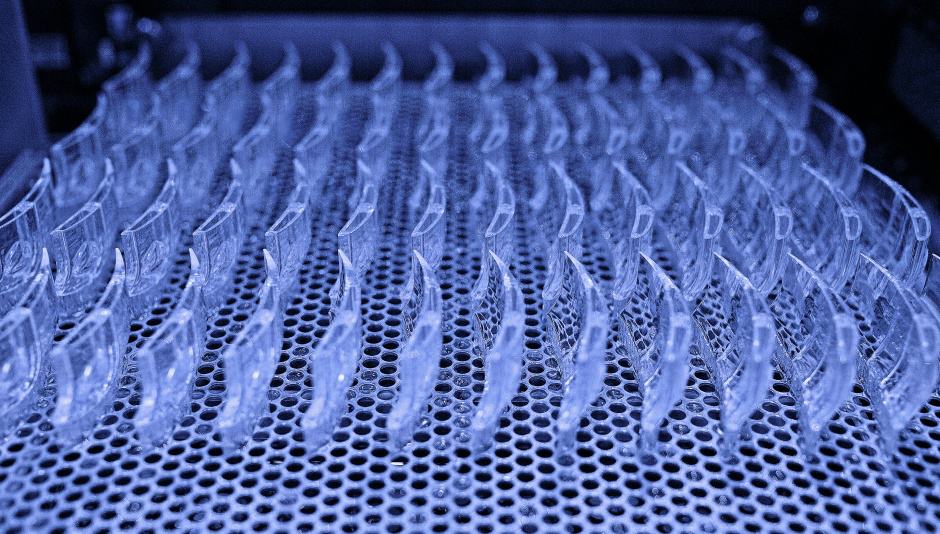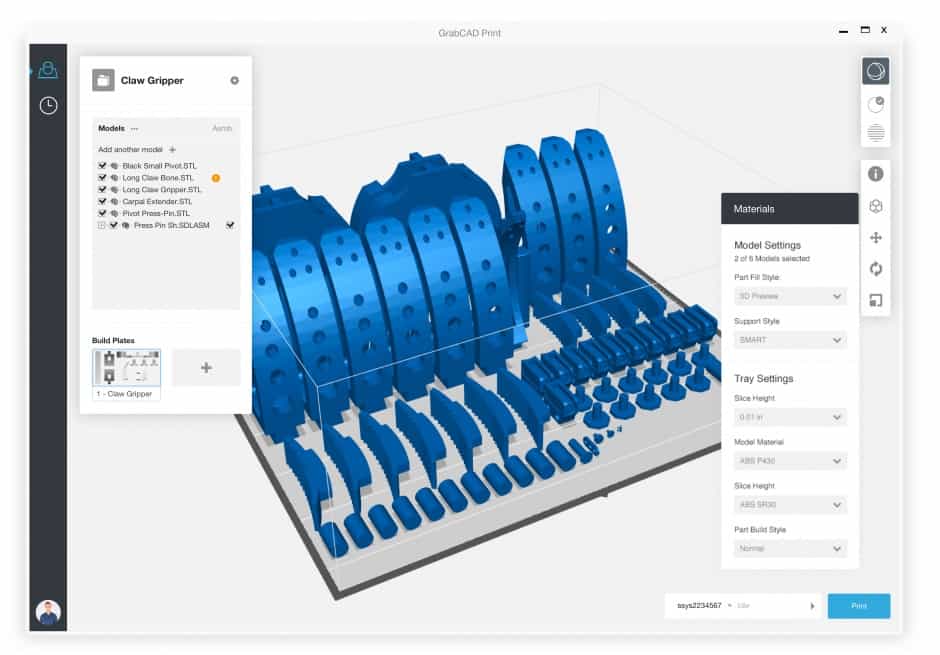From fashion designers to aerospace engineers, 3D printing is transforming the way products are designed, tested and created. The technology was invented in the 1980s, but largely used to create prototypes from weaker materials. It wasn’t until the expiration of a crucial patent seven years ago that 3D printing really started to emerge as a tool that could transform manufacturing. Today, many are hailing it as a key component of a new industrial revolution. But experts claim another change could still transform the industry.

That change is being driven by cloud-based software. By building up complex shapes, layer by layer, 3D printing is able to create intricate, bespoke designs far easier and at a much lower cost than traditional manufacturing techniques. By its very nature, it offers a collaborative approach to creating product designs. With the help of the cloud, anyone with an internet connection can create, adjust store and stream designs to 3D printers anywhere in the world. Many believe the technology could help open up 3D printing for the wider population.
Belgium-based Materialise was one of the first companies to provide cloud-based services for 3D printing. “We noticed that more and more consumers are looking for technology to 3D print their applications,” said Kirsten Van Praet, marketing coordinator at Materialise. “The companies offering this technology can only do so when they have access to data preparation software. Connecting to our cloud services to have access to this technology is a logical step. In general, the customers of our cloud-based services are software providers, 3D model databases, 3D printing services and desktop machine manufacturers.”
Materialise said it has an inventory of patented 3D printing technology at hand and it makes parts of that technology available via cloud. Other companies can also integrate their cloud offerings into this workflow to build up a larger database. “In that way they don’t have to develop the software themselves and can focus on their core activities,” said Van Praet.
“It is mainly data preparation technology that is offered in the cloud. Is the file ready to go to a 3D printer? Is it in the right file format? Is it watertight? Is wall thickness sufficient everywhere? These are a couple of questions that pop up when someone wants to print a part. That’s why we decided to put some of our Materialise Magics software in the cloud and enable other companies to connect to our cloud API [application programming interface]. Users can nowadays worry less about whether or not their design will successfully print, giving them more time to make great things that truly matter.”
A number of other major players in the 3D printing sector have also been working on cloud-based 3D printing services. 3D Systems, for instance, has been using cloud-based software to customise a product known as Bespoke Braces. This is a personalised, 3D-printed brace for children and young adults with scoliosis. In the Bespoke Braces process, a patient’s arm is scanned and data is transmitted to cloud-based servers where a brace design, customised by the patient and clinician, is created to match the shape of the patient’s individual anatomy.

One of its cloud-based tools is a system known as 3DSprint. This lets anyone, according to the company, “break down historic design and manufacturing barriers to 3D printing”. The software was used by Zetroz to create the world’s smallest ultrasound therapy system. The team would convert the CAD file into STL format and load it into 3D Systems’ 3DSprint software to lay out the parts on the ProJet 5500X build plate. 3DSprint meant that the design of the complex device was a collaborative effort between several team members.
“With 3DSprint we are giving engineers and designers the ultimate streamlined shared cloud and desktop platform experience that makes the design-to-manufacturing workflow faster, simpler and ubiquitously connected,” said Avi Reichental, president and CEO of 3D Systems.
Another major 3D printing firm, Stratasys, announced in May that it would be pursuing a new cloud-based software strategy designed to make 3D printing significantly easier and more intuitive. The approach is powered by a new, open architecture ‘design-to-3D print’ workflow application, known as GrabCAD Print. The partnership means product designers, engineers, and 3D printer operators can now send CAD files to a Stratasys 3D Printer from their familiar CAD environments. The system also helps with data sharing related to job scheduling, print queue status and the amount of material used. It can be accessed via standard browsers, mobile apps or through the GrabCAD Platform.
“When keeping up with fast-paced development, frequently things will change in the last minute. In the past when a build had to be switched to a different 3D printer I’d have to do a clean restart – redo all of that file preparation work. With GrabCAD Print it’s easy to switch between 3D printers within a single app. That’s a huge step forward in improving the workflow,” said Jimmy Callaway, design engineer, Joe Gibbs Racing.
According to Wohlers Report, the 3D printing industry is expected to grow by more than 31 per cent per year until 2020. In just four years, it will generate over £16bn ($21bn) in worldwide revenue. This year alone, it is expected to generate £5.4bn ($7.1bn) globally. These figures seem impressive, but many experts are arguing that more needs to be done to improve the technology before manufacturers can really reap the benefits. But it seems, using cloud-based software could help make this happen.
“[We have] different companies that are interested in providing cloud-based 3D printing services, from AM platforms such as Grow to desktop machine manufacturers such as Leapfrog,” said Van Praet. “It always comes down to the same thing: making 3D printing as simple as possible to a wide audience.”




Glasgow trial explores AR cues for autonomous road safety
They've ploughed into a few vulnerable road users in the past. Making that less likely will make it spectacularly easy to stop the traffic for...